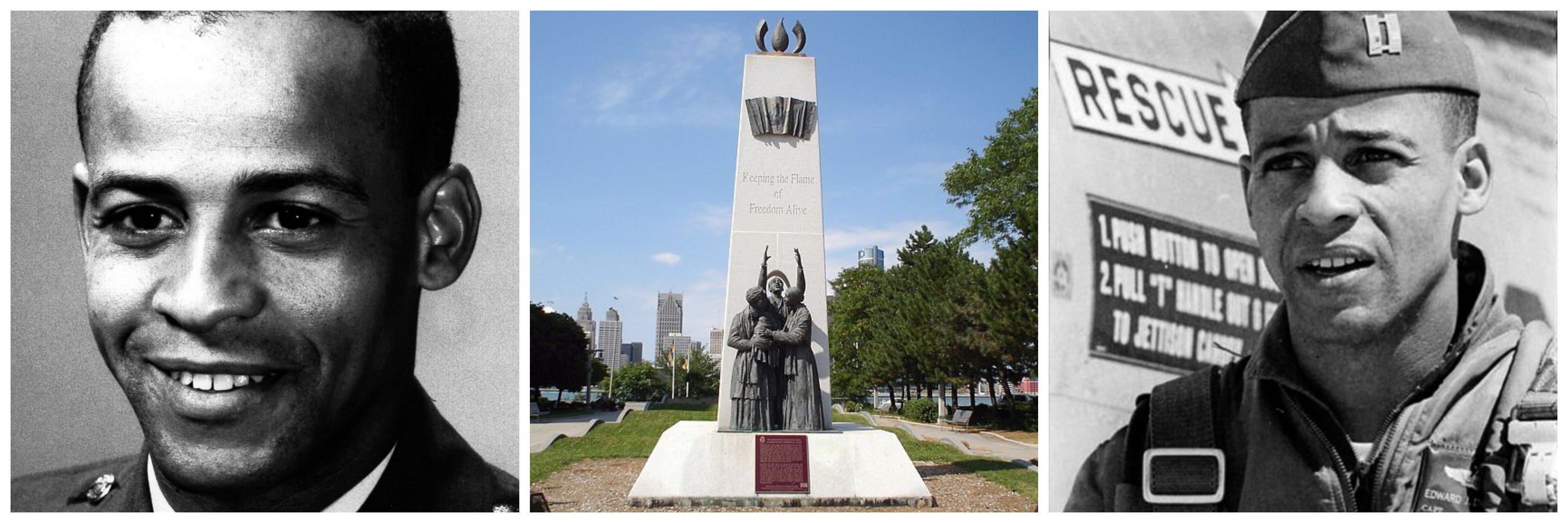Dwight dreamed of flying jet aircraft, joining the U.S. Air Force beginning in 1953. Eight years later, he earned a degree in aeronautical engineering from Arizona State University. Following his completion of the experimental test pilot course, Dwight aerospace research pilot training, while he completed training to become an astronaut. In 1961, President Kennedy selected Dwight to enter training as an experimental test pilot, in preparation for a flight to space as America’s first African-American astronaut. The pilot suddenly found himself catapulted onto the covers of magazines and on the front pages of newspapers around the world. At a time when the Soviet Union was beating the United States in the space race, the young jet pilot represented a chance for the United Sates to win a much-needed ground-breaking flight. “To see an Ed Dwight walking across the platform getting into an Apollo capsule would have been mind-boggling in those days. It would’ve had an incredible impact,” stated Charles Bolden, the first African-American to head NASA. The following year, Dwight piloted his F-104 Starfighter jet to an altitude of 80,000 feet before cutting his engines, staring at the curvature of the Earth below his craft. It was the closest he would ever come to reaching space. “Facing severe discrimination from other astronauts, Dwight persevered until President Kennedy’s death, when government officials created a threatening atmosphere. He resigned in 1966, never having gone into space,” The History Makers reports. Much like Jerri Cobb and the women of Mercury 13, the political will to see an African-American in space was pushed to the back burner with the drive to land on the Moon and the budget cutbacks that followed that success. On August 30, 1983, Guion Bluford became the first African-American to reach space, flying aboard the space shuttle Challenger. Bluford would go on to log 688 hours in space aboard four shuttle missions. Enrolling at the University of Denver in the mid-1970’s, Dwight returned to his childhood love of art. While there, he learned to operate the metal casting foundry on campus. By 1977, Dwight earned a Masters of Fine Art, and had started to secure his reputation as a talented sculptor. Today, this Renaissance man spends his time, pursuing his dream of creating art. Ed Dwight Studios of Denver grew to become one of the largest privately-owned production and marketing facilities in the western United States. Today, Dwight — nearly the first African-American in space — is recognized as a sculpting innovator, the developer of the negative space technique. His sculptures include a series of statues commemorating the contributions of African-Americans to western states, as well as 70 pieces in a Evolution of Jazz series, featuring Ella Fitzgerald, Benny Goodman, and other legendary musicians. “While not actually becoming an astronaut, he was a trailblazer in the attempt to break the color barrier in America’s astronaut program,” Bolden stated in 2009. Ed Dwight may not be a name on the tips of every tongue today, but he went an enormous distance in advancing the cause of inclusion and acceptance across the nation. This article was originally published on The Cosmic Companion by James Maynard, founder and publisher of The Cosmic Companion. He is a New England native turned desert rat in Tucson, where he lives with his lovely wife, Nicole, and Max the Cat. You can read this original piece here. Astronomy News with The Cosmic Companion is also available as a weekly podcast, carried on all major podcast providers. Tune in every Tuesday for updates on the latest astronomy news, and interviews with astronomers and other researchers working to uncover the nature of the Universe.

